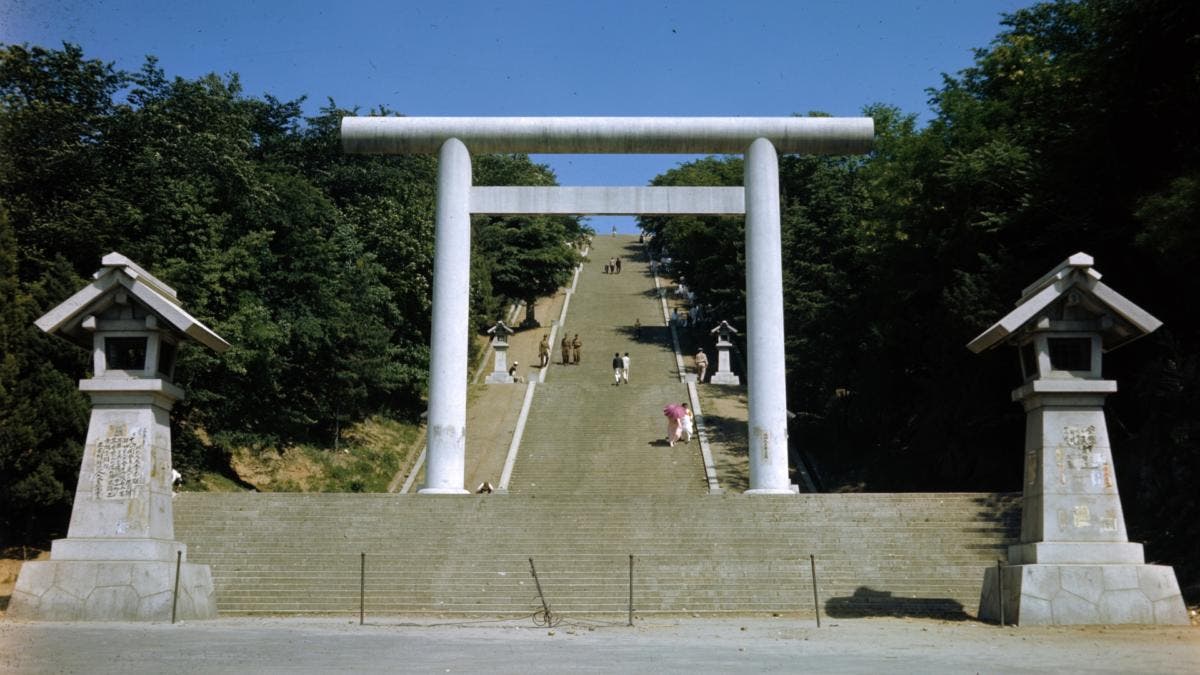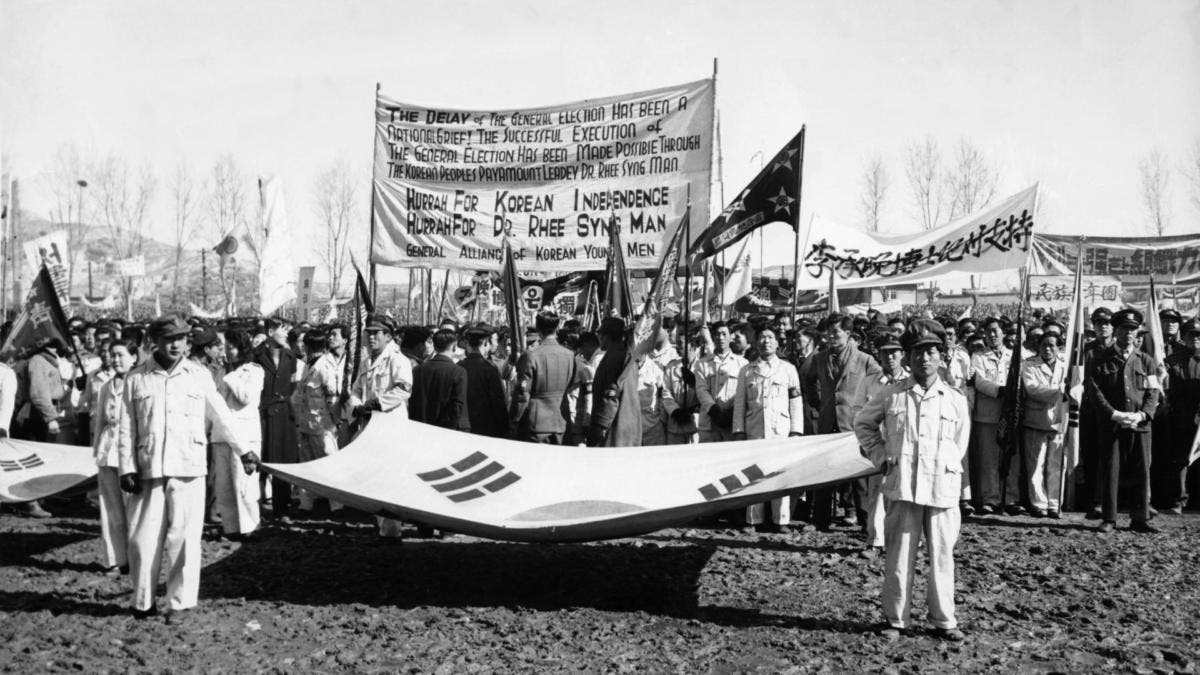
During the 2018 Olympic Winter Games, outraged South Koreans demanded an apology from NBC after a commentator asserted that Korea’s transformation into a global powerhouse was due to the “cultural, technological and economic example” of Japan. For many South Koreans, analyst Joshua Cooper Ramos statement reopened old wounds—ones carved by a generation of occupation of the country by Japan.
“Any reasonable person familiar with the history of Japanese imperialism, and the atrocities it committed before and during WWII, would find such a statement deeply hurtful and outrageous,” read the apology petition signed by tens of thousands of South Koreans.
Japan Occupies Korea
In 1910, Korea was annexed by the Empire of Japan after years of war, intimidation and political machinations; the country would be considered a part of Japan until 1945. In order to establish control over its new protectorate, the Empire of Japan waged an all-out war on Korean culture.
Schools and universities forbade speaking Korean and emphasized manual labor and loyalty to the Emperor. Public places adopted Japanese, too, and an edict to make films in Japanese soon followed. It also became a crime to teach history from non-approved texts and authorities burned over 200,000 Korean historical documents, essentially wiping out the historical memory of Korea.
During the occupation, Japan took over Korea’s labor and land. Nearly 100,000 Japanese families settled in Korea with the land they had been given; they chopped down trees by the millions and planted non-native species, transforming a familiar landscape into something many Koreans didn’t recognize.
Nearly 725,000 Korean workers were made to work in Japan and its other colonies, and as World War II loomed, Japan forced hundreds of thousands of Korean women into life as “comfort women”—sexual slaves who served in military brothels.
Manipulation of Korean Art and Culture
Korea’s people weren’t the only thing that was plundered during Japan’s colonization—its cultural symbols were considered fair game, too. One of the most powerful symbols of Korean sovereignty and independence was its royal palace, Gyeongbokgung, which was built in Seoul in 1395 by the mighty Joseon dynasty. Soon after assuming power, the Japanese colonial government tore down over a third of the complex’s historic buildings, and the remaining structures were turned into tourist attractions for Japanese visitors.
As historian Heejung Kang notes, the imperial government also attempted to preserve treasures of Korean art history and culture—but then used them to uphold imperial Japan’s image of itself as a civilizing and modern force. This view of Korea as backward and primitive compared to Japan made it into textbooks, museums and even Koreans’ own perceptions of themselves.
The occupation government also worked to assimilate Koreans with the help of language, religion and education. Shinto shrines originally intended for Japanese families became places of forced worship. The colonial government made Koreans “worship the gods of imperial Japan, including dead emperors and the spirits of war heroes who had helped them conquer Korea earlier in the century,” explains historian Donald N. Clark.
This forced worship was viewed as an act of cultural genocide by many Koreans, but for the colonists, it was seen as evidence that Koreans and Japanese were a single, unified people. Though some families got around the Shinto edict by simply visiting the shrines and not praying there, others grudgingly adopted the new religious practices out of fear.
By the end of its occupation of Korea, Japan had even waged war on people’s family names. At first, the colonial government made it illegal for people to adopt Japanese-style names, ostensibly to prevent confusion in family registries. But in 1939, the government made changing names an official policy. Under the law, Korean families were “graciously allowed” to choose Japanese surnames.
At least 84 percent of all Koreans took on the names since people who lacked Japanese names were not recognized by the colonial bureaucracy and were shut out of everything from mail delivery to ration cards. “The whole point was for the government to be able to say that the people had changed their names ‘voluntarily’,” writes historian Hildi Kang.
Korean Resistance and Independence Movements
Though Japan occupied Korea for an entire generation, the Korean people didn’t submit passively to Japanese rule. Throughout the occupation, protest movements pushed for Korean independence. In 1919, the March First Movement proclaimed Korean independence and more than 1,500 demonstrations broke out. The protests were brutally suppressed by the Japanese, but not before the desire for independence swept through Korea.
Later, underground groups like the Party of Three Thousand, a group of students that tried to undermine the Japanese military after being conscripted to fight in World War II, were formed. Koreans also protested in their own quiet ways. Some refused to speak Japanese or change their names; others came up with names that reflected their family history or contained subtle resistance to the policy.
Post-Occupation Division and the Korean War
World War II devastated not just Japan, but the Korean Peninsula, and in 1945, the United States and the USSR captured the peninsula and ended Japanese rule there. Korea was divided into two occupation zones that were intended to be temporary. However, a unified state was never given back to the newly independent Korean people. Instead, the Korean War broke out between the Soviet and Chinese-backed northern half of Korea and the United States and United Nations-backed south.
After the Korean War, South Korea transformed into a liberal democracy and tried to purge itself of the remnants of Japanese rule. The country prosecuted a small number of colonial collaborators immediately after World War II, and some of their land was confiscated. Today, disputes continue about how and whether to prosecute those who worked with the Japanese government during the occupation.
While South Korea still grapples with the fallout of Japan’s brutal occupation, it hasn’t forgotten its resistance. Today, March 1—the day of the independence protest in 1919—is a national holiday in South Korea, a reminder not just of the resilience of the Korean people, but of the years of occupation they withstood.



